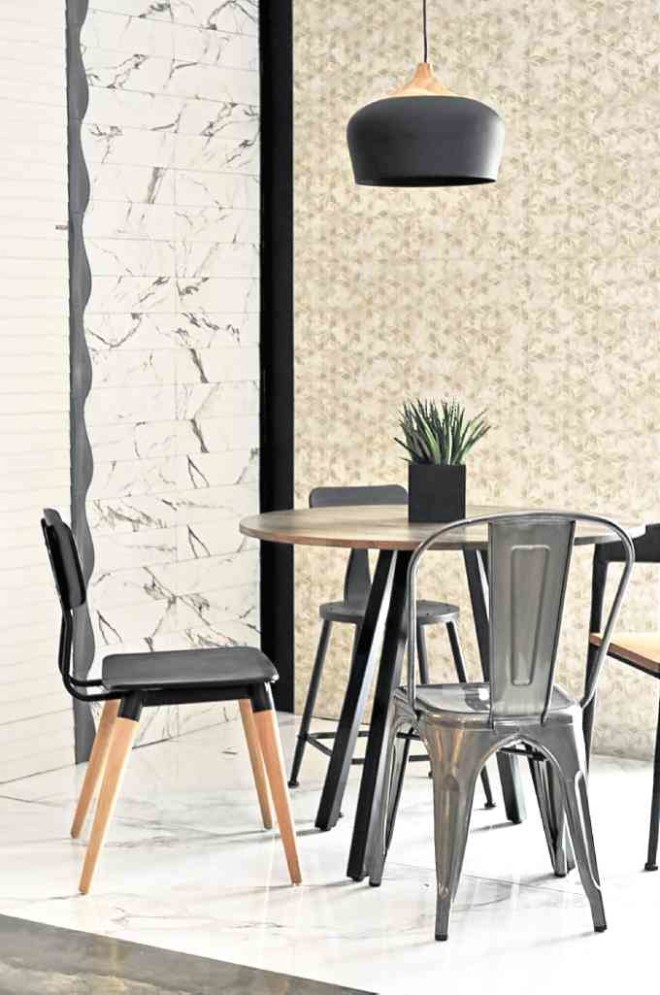
We’re not sure who’s to blame, whether it’s Pinterest or Fixer Upper and the countless other home and renovation shows we religiously watch on HGTV. But it seems to us that, in recent years, we’ve all started to care just as much about flooring and lighting fixtures as we do about shoes and bags.
But for those in Cebu who have been wanting to channel our inner Kelly Wearstler or Joanna Gaines, it’s been a bit of a challenge—not for lack of imagination (or so we’d like to think), but for lack of design sources.
Which is why we could not have been more thrilled when Architecture and Interior Source (AIS) recently opened the doors to its new showroom in Vibo Place on N. Escario Street.
Now we don’t have to hop on a plane to Manila for those subway and hexagon tiles we’ve been pining for.
The 500-sq m showroom of our interior design dreams is the brainchild of architect Buck Sia and his wife Dulce. We’ve known Buck for some time now, and if anyone were to open a style-savvy space like AIS in Cebu, it would be him.
With an enviable shoe collection, and as one of the handful of straight men we know who fearlessly incorporates prints in his wardrobe, he certainly knows a thing or two about style. And as the principal architect of Zubu Associates Design Services, he’s practically made it his life’s mission to be in constant pursuit of progressive architecture and design, landing him on BluPrint Magazine’s list of 20 Outstanding Young Designers under 40 in 2013.
Here, he indulges our questions about his design philosophy, his work, and his hopes for Cebu.
Tell us about your design philosophy.
My designs are rooted in modernism, but my approach is progressive. They challenge the precedent and investigate a process that we aspire.
Where does your interest in architecture come from?
My mind-set is all about innovation. I give credit to my father and our family business for teaching me to always seek new challenges. Our family has been part of the supply chain of Cebu’s construction industry, and the modern approach of architecture satisfies my need to innovate.
Who are your biggest influences, the architects you look up to, and why?
I have always credited my father, although he’s not an architect, as my source of inspiration for innovation. But my design foundation was developed by my mentor, Alex Medalla. Both of them are still very influential for me.
Aside from Alex, I’d also like to credit Ed Calma and Joey Yupangco as key figures who have influenced the current brood of architects and designers excelling in our field. I do not have an artistic background, so I produce designs in a very systematic and theoretical way, in tune with the teachings of modernism—the play of massing, volumes and planes, among others.
Internationally, I like the works of Ben van Berkel, Rem Koolhaas, Delugan Meissl, Morphosis and Diller Scofidio.
What’s your favorite piece of architecture?
The St. Ignatius Chapel of Steven Holl and the Mercedes-Benz Museum by UNStudio have moved me. As well, the Guggenheim Bilbao—its volumetric brilliance and how the shape of the exterior creates the shape of the interior. I have to experience Le Corbusier’s Ronchamp chapel, but I believe I will be moved by it, as well.
What’s your favorite building in Cebu?
As I mentioned, I study the essence of architecture, and I appreciate architecture when it shows two qualities: an excellent experience and being true to its times. I do not have a favorite, but I appreciate everything from the Spanish churches we have, to Art Deco buildings on Colon Street to buildings of the ’60s and the ’70s.
Sadly, though, these buildings are not maintained and appreciated very well. I see a lot of private houses and buildings that I admire, but I would like to see more significant architectural character in our public spaces as well as in civic and cultural buildings.
What are some of your most memorable projects? What makes them special to you?
I do not play favorites with my works. I see my work as a reflection of my character, my skill and thinking during that period. With each project, I get excited, but I also criticize myself on what could have been. Recently, I’ve been very happy with a house I did in Iligan called the line graph house, as well as the DTI Cebu building, where we fixed it up but used the character of the existing building as a main feature. I look forward to the completion of our box to gable house.
What inspires you?
Knowledge inspires me—the constant challenge, “What haven’t I done?” or a design idea, a theory I want to apply. For example, when we designed the line graph house, we wanted to produce a pure form, but at the same time dynamic movement for the building, a dynamic mass.
How has Cebu’s architecture and design industry and community changed since you started?
It has grown immensely, and the state of contemporary design and architecture since the start of the millennium has improved. Apart from economic growth, I believe this is due to some great local design heroes who always aspire to have an authentic standpoint on design excellence and innovation.
What are your hopes for Cebu in terms of design?
There is no doubt that Cebuano designers are very intuitive, but we have yet to embrace better technology through fabrication, design modeling and research.